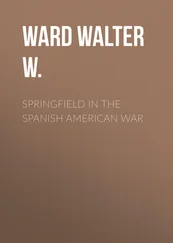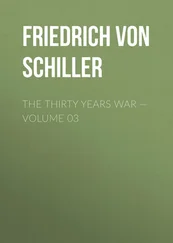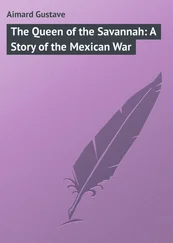Finally, on September 23, a topographical party went forward to study routes, inquire about wood, water and forage, and select halting places; and two days later some 1400 men, the first section of the “army,” advanced into an almost unknown region with about one hundred and seventy-five wagons and provisions for two months.16 The distance to Presidio del Rio Grande, a small Mexican town five or six miles beyond the river, was about 175 or possibly 185 miles. Much of the country proved to be rough and wild, but there were also barren prairies, deep “hog-wallows,” rich bottom-land and one fine, broad valley. Several streams had to be crossed, and among these were counted the Medina and the Leona, not less beautiful than their names. Population there was almost none, though on the first day’s march Castroville, a German town planted on American soil by a Frenchman bearing a Spanish name, offered quite cosmopolitan suggestions. A drought of several weeks had made the roads hard and the streams fordable, and no serious difficulty was encountered until on October 8 the advance came to the Rio Grande.26
The river was here swift and rather more than four feet in depth; but with the aid of boats and a pontoon bridge, provided beforehand by Wool, the troops effected a crossing safely during the next few days, established a small fort at each end of the bridge—to hold it and to guard the boats for the second section under Colonel Churchill, which was still waiting at San Antonio for the means of transportation—and then camped three or four miles beyond the town for rest and repairs. Some of the teams had come all the way from La Vaca, 330 miles, without stopping for a day. As the small Mexican border force had retired and the citizens were friendly, there was nothing to fear; and Wool’s amicable assurances, reinforced with strict orders to molest no one, promoted kind relations. The government had left him without specie, and the people would accept only hard cash; but with private means and by dint of borrowing he obtained half-rations of corn. This brightened the outlook noticeably, for subsistence was to be, of course, the greatest problem; and the arrival here of Brigadier General Shields,17 who brought not only another body of the troops but news that Monterey had fallen, and took command of all the infantry, together with a small force of mounted men, appeared to strengthen the expedition materially.26

Wool had received no definite instructions from Taylor, and on October 16 with about 1800 men he struck out according to his own judgment for Monclova, taking a circuitous route practicable for wagons and artillery. This brought the army soon to San Fernando de Rosas, a garden of roses lying in a beautiful plain on the cool and limpid Hidden River (the Escondido), surrounded with trees and encompassed at a distance with superbly grand peaks.[18] Here the road turned more toward the south, and the country soon became broken. Formidable mountains upreared themselves ahead, and before long the troops were among them, traversing valley after valley in order to turn their huge flanks.26
The San José range, some 4000 feet high, had to be climbed. It was a hard task; but when the mists dissolved, Wool and his men gazed with delight over two beautiful valleys, where meandering lines of dark foliage marked the watercourses, while on the west, like a battlemented wall, towered the Sierra de Santa Rosa, its precipitous buttresses festooned with white and purple clouds. Descending then through a gorge to the plain of San José, the army next encountered the Alamos and Sabinos Rivers, each about four feet deep and racing like a torrent. To get the wagons across looked at first impossible; but with incredible exertions and the aid of ropes and improvised bridges the feat was accomplished.26
At the foot of the next range lay Santa Rosa, a town of some 2500 people, where the troops arrived on October 24. All were Federalists here. Their interests had suffered greatly from the dishonesty and inefficiency of the central government, and the presents of cake, fruit and confectionery offered to the Americans told their own story. Beyond this point the road entered a sterile region, where almost the sole inhabitants were sheep and goats. Now and then water could only be obtained by scooping it from holes in salty ground, and sometimes there was hardly fuel enough to boil the coffee. At length coffee and sugar gave out, but the magnificent range on either side helped the men keep up their spirits. A protest against the American advance was received, and some 2500 men gathered under Colonel Blanco to enforce it;19 but as the loss of Monterey had cowed the people, and there were no funds to stimulate them, Blanco dissolved his army; and on October 29 Wool formally occupied Monclova without opposition. A week later Churchill with a hundred wagons and nearly all of the rear section came up.26
At this town, a place of about 5000 population, lying amid hills on the fine Monclova River, Wool remained almost four weeks, for on account of the armistice Taylor forbade a further advance toward the south; and the army, camping a mile or so from the city, had time to drill, recruit, reconnoitre and make repairs. It was a pleasant sojourn. Rivulets of pure water freshened the streets; highly cultivated fields, mostly planted with corn, filled the wide valley, and far mountains clung to the horizon like azure clouds. Being now almost 600 miles from La Vaca, Wool sent for the last supplies waiting with escorts at San Antonio, prepared to break up his communications with that point, and opened a connection with Camargo, not more than 200 miles distant. At the same time he collected some local provisions, though most of the surplus had already been drawn away by Ampudia, and he studied the routes. Strict rules were made for both officers and men about entering the town; the sale of liquor to soldiers was prohibited under penalty; and the arrival of some gold aided materially.26
Things went substantially well, in fact, yet they did not go smoothly. Considerable sickness prevailed among the troops. For a time the daily ration per man had to be fixed at nine ears of corn, ground in the portable steel mill of each company; and the soldiers grumbled. Orders were issued requiring every man to shave, as the regulations provided; and beardless young fellows, lacerating their faces in order to prove themselves “men,” grumbled again. The volunteers abominated the “tarnal regulars,” who were naturally the chief reliance for enforcing rules, and when an opportunity came, retaliated. Many of their officers were outspokenly dissatisfied with the conduct of the expedition. Wool’s bearing was denounced as harsh; but perhaps their own deportment had something to do with that, for the punctilious Mexicans thought his manners good. Officers as well as men chafed under the discipline; but the General could easily reply that good-will on the part of the Mexicans was essential, and that not a single complaint had yet been made by the people.20 In all probability it was argued that a flying column of half Wool’s numbers would have been far preferable; but it could be answered that wastage from disease and battle had been anticipated, that so small a column would probably have been attacked by Colonel Blanco’s irregulars and by other forces,21 and that after the conclusion of the armistice Ampudia might have to be reckoned with.26
Certainly the dissatisfied officers ridiculed unmercifully the number of wagons. Here their ground was somewhat firmer. Jesup himself had taken the position that such a train could neither reach Chihuahua nor be sent back to the base. But in this matter Wool stood at the centre and the quartermaster general stood at the circumference. It seems very doubtful whether an adequate mule train could have been organized at San Antonio in season. Without the wagons the army would probably have been compelled to live more or less upon the country; and this would have led to the concealment, or even the destruction of supplies, to bloodshed, to a state of things not compatible with the conciliatory methods ordered by Taylor and the government, perhaps to a serious lack of rations, and possibly to the ruin of this isolated command. Moreover artillery was essential; and Wool may have reasoned that where cannon could go, wagons could follow.26
Читать дальше













